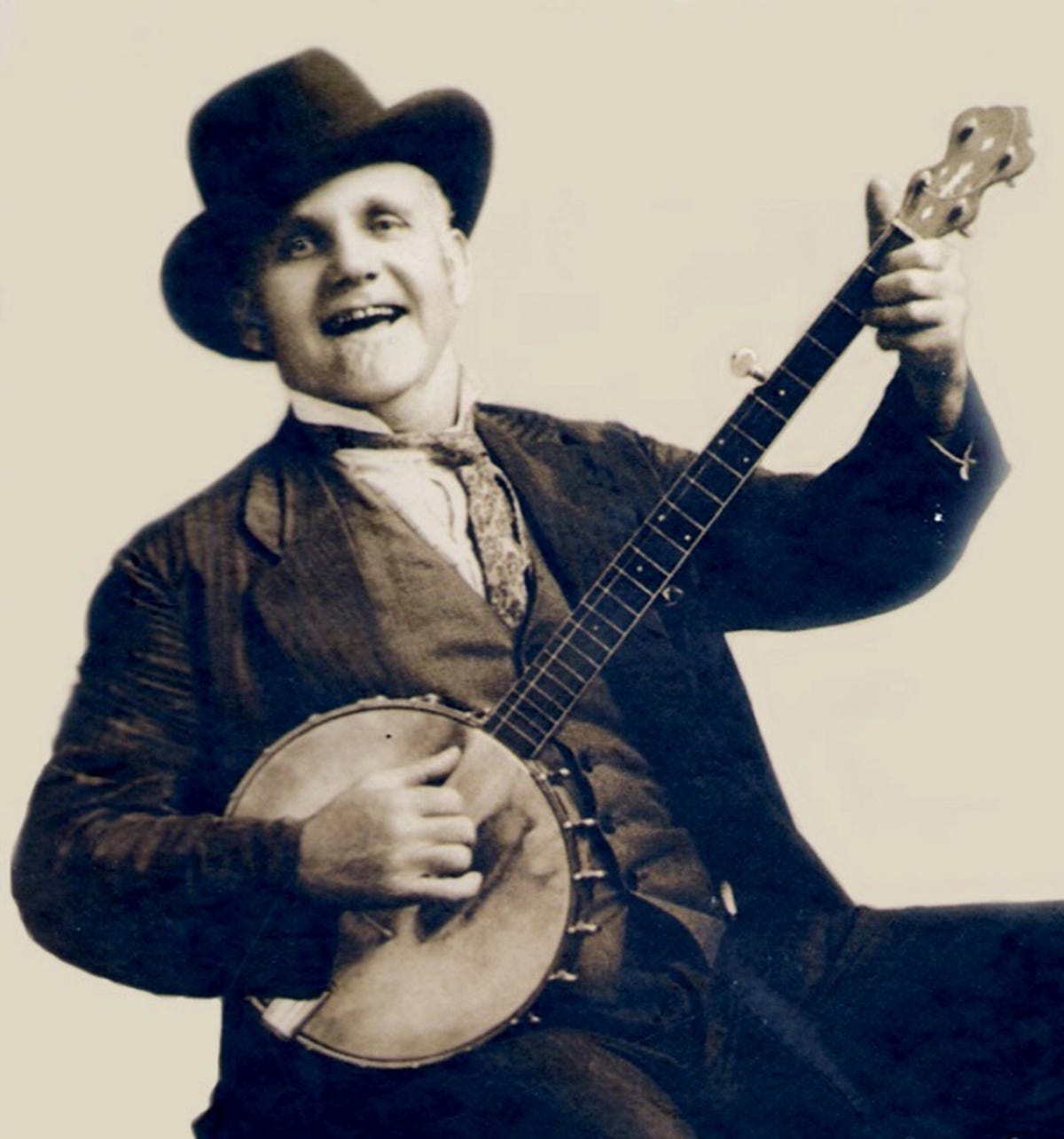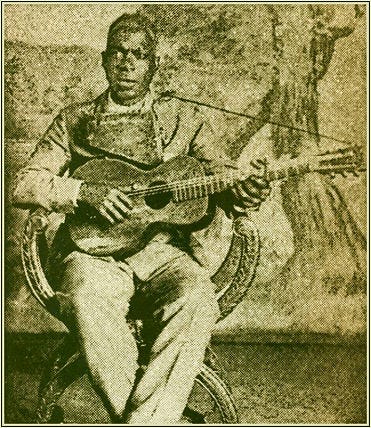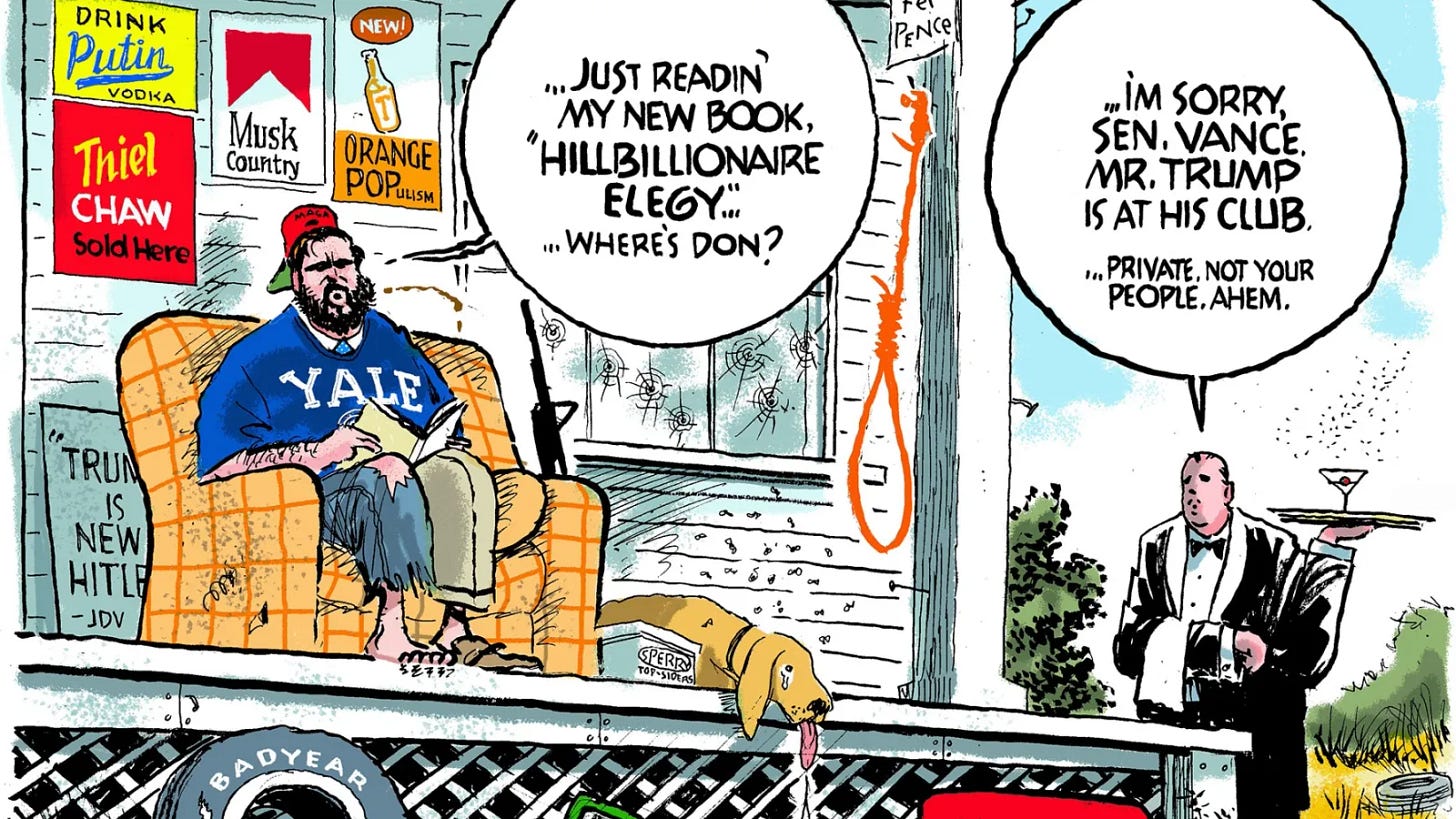Hi Greil. I love Pere Ubu, but oddly the first song I went to after hearing of David Thomas’s passing was his version of “Way Down The Old Plank Road” from The Harry Smith Project.
I hadn’t thought about those series of concerts featuring contemporary artists covering Anthology of American Folk Music songs in a while, so I revisited the DVD. I’m generally suspicious of such events and projects, but was surprised by how creative and interesting some of the versions presented are, especially Thomas’s take on “Fishing Blues.” The Roswell Rudd with Sonic Youth take on “Dry Bones” stands out, too.
I imagine you might have written about or commented on the concerts or recordings and concert film at some point somewhere, but I wonder if you have thoughts about those things 20 years after the fact.
And any thoughts on Thomas’s career in general would be welcome as well. Those early Ubu records are canon, but I’m wondering if you kept up with not just Ubu, but the various other projects throughout his life as well.
Thank you. —ERIC DAWSON
I asked David to do “Way Down the Old Plank Road” because he always reminded me of Uncle Dave Macon, and vice versa. “Fishing Blues” has such a light touch from Henry Thomas I wouldn’t have believed anyone could pull it off, but he did.
I listened to all the Hearthan singles, which were on the wall at the Rather Ripped record store in Berkeley in 1975, but they didn’t come across for me until I’d heard “Dub Housing” and that snatch of “What Will We Do with a Drunken Sailor” and the language he would always explore opened up for me. After that I was a fan and followed all the albums—though I have to admit the first time I saw Pere Ubu, at a club in San Francisco about 1979, the music was so ugly I walked out. But as he went on to solo records I think he did his best work, especially with his Kiss Me Deadly remake Ray Gun Suitcase and Two Pale Boys.
I wrote about him often, but especially in a chapter in my 2006 book The Shape of Things to Come—named after the Max Frost and the Troopers fake band single David also loved, a title he used for the unmatched Pere Ubu live album made in Cleveland when Peter Laughner was still in the band—called “Crank Prophet Bestride America, Grinning.” We half worked together on it, as I was constantly emailing him with questions and he shot back great parables and stories in reply.
He was a wonderful guy. He was often angry and resentful but never seemed bored. He saw things in the street that others didn’t, unless it was Ignatius J. Reilly, and he only lived in A Confederacy of Dunces. I never met anyone remotely like him.
Hello Greil, I hope all is well. Two questions, the first concerns the state of political cartooning. Do you have any thoughts on the current crop of artists? Ann Telnaes, famously late of the Washington Post, has a ravishing technique and her portraits of Trump are the best I’ve seen. But her technique might be too beautiful—when I think of Trump, I think of Salò, not a Terrence Malick film. Pat Oliphant’s poison pen and ink is more my speed but he’s retired. Most of the other artists are hampered by the glossy computer colors—the satire is blunted by the Candy Crush vibe. Part two, briefly, did you see any of the Patti Smith Carnegie Hall tribute? I just watched some dodgy iPhone footage of Patti’s stirring “People Have the Power” but I’d give Karen O the edge for her joyous performance of “Gloria.” Her happiness would not be denied, even by the sorry state of the union. —CHARLIE LARGENT
Oliphant is a a great miss. So is Herblock, for that matter. But the only political cartoonist I look for—and consistently cut out, and put up around my desk—is Jack Ohman. His work appears in the Sacramento Bee and is carried in the San Francisco Chronicle. He started out at the Minnesota Daily, the college newspaper, where Bob Dylan as he wasn’t when he was there wrote entertainment copy. One of Ohman’s most touching pieces was about the Humphrey legacy in Minnesota politics. but I value him most for his risen-from-the-dead stock Trump face, his love of detail, his flair, the obvious pleasure the combination of his talent and his hatred brings him. As in this:
He also has a fine Substack newsletter where you can follow a lot of his work.
And thanks for sending Karen O and “Gloria.” I’m glad to see her looking so on top of the world. But I have to say self-celebrations by anyone about anything, in this case the 50th anniversary of Patti Smith’s Horses, make me a little sick in the concept, never mind the execution. I mean, I have a 50th anniversary edition of my book Mystery Train coming out in the fall. So with your prompt I started fantasizing about the tribute concert, never mind that almost everyone I wrote about is dead, the lineup could be great anyway: Ben Harper can be Robert Johnson. Gary Busey can reform Carp and do the Band. Joni Mitchell can be Sly Stone in blackface. Randy Newman be himself, but can only sing “If you haven’t looked at a Ford lately, look again.” The guy who used to stand in a doorway all day between 8th and 9th streets on 6th Avenue when I lived in New York, all dressed in black with his black hair in a pompadour and his shoulders pitched just right, is Elvis. Or was. And one person who could actually leave everybody wondering: Jonathan Richman as Harmonica Frank.
Greil, Just a quick aside about your reaction to the Peter Wolf book. The same week I read your column I attended a signing for it at a local library. My wife is the fan; I only know the hits and the videos.
I used the time before his appearance to dip in and out of the book and I’d agree with you. All these interesting personalities and yet they seemed frozen on the page. Once he appeared with an interviewer in tow, everything changed. The same stories, acted out with dancing, physicality and different voices, came brilliantly to life. The audience was howling and after about an hour as the interviewer tried to slide into the Q&A portion, Wolf said “What? I’m just getting warmed up!” and it was easy to believe him. The performed version put the written one to shame. —ROBERT GETZ
I’m thrilled to hear it and not surprised. I wish I’d been there. Forget the audiobook—let’s have the book-tour video compilation!
Have you read John & Paul: A Love Story in Songs by Ian Leslie? If so, what's your opinion? —BRAD FACKLER
I haven’t read it, but even though what I’ve seen about it makes it seem padded, I plan to. Have you? What do you think?
I recently came across mention of an upcoming book about the creative collaboration that existed for many years between Martin Scorsese and Robbie Robertson. It’s entitled Insomnia and due for a November release this year. I didn’t immediately notice that Robbie is the author. So, he must have been working on a second volume of his memoirs which he never lived to publish. What did you think of his book Testimony from about 10 years ago? While by no means definitive, it added to the history of The Band which began I guess with Rolling Stone’s review (Al Kooper?) of Music From Big Pink and reached an early peak with your seminal book Mystery Train. Can you give your readers a little backstory on how the idea for Mystery Train came about for you? And as a lot of creative minds have suffered from chronic insomnia, hence Robbie’s book title, have you had to deal with insomnia yourself as a by product of your work? —JAMES R STACHO
I wrote about Robbie’s Testimony for the New York Review of Books in 2017, a piece you can find here from greilmarcus.net.
I haven’t seen the new book, which has been in the editorial works since Robbie died. Who had control over its contents—Robbie’s widow, his children, the publishers, Scorsese—I don’t know. The press release refers to the Scorsese-Robertson partnership leading them into self-destruction: I do remember a night in Los Angeles after the premiere of The Last Waltz at Scorsese’s house, where Robbie was living, and the two of them getting up every half hour to, you know, go to the bathroom. The talk was great.
Mystery Train came about because I had dropped out of graduate school and had nowhere to go with all I’d learned and fallen in love with in what at Cal fell under the umbrella of American Studies, from Lincoln’s speeches to Melville’s short stories. I wanted to write a book about rock ’n’ roll and American culture, with no idea beyond that. At the start it was completely formless, and pointless. I started off with pages about “American Pie” and then got lost. I did have this idea that after going all over the place there might be 20 pages at the end where I’d look at a few performers and try to go into depth about what made them who they were—a sort of proof that rock criticism could be writing. That turned into the whole book. I decided to write about people who, to me, had never been written about with any attempt to dive down all the way, and I would do that—somehow. One day I was fooling around with Harmonica Frank, who I chose partly because he was so obscure no one would know enough to criticize whatever it would be that I would say about him. In an hour or so I wrote the “A Digression” part of that chapter and what turned out to be the essay part of what turned into the Epilogue of the book. I had the shape, and spent two years filling it in.
I don’t have insomnia.
I thoroughly enjoyed your “Tube” column of November 1974—the fun you had writing it is evident throughout. I’m just old enough to remember some of the shows you critiqued, particularly The Waltons. “Creepy” is the word for Richard Thomas, alright—have you seen the movie You’ll Like My Mother? As a sexual psychopath menacing his brother’s pregnant widow (Patty Duke!), Thomas milks that creepiness for all it’s worth, and good for him.
Something in your Dolly Parton entry jumped out at me in an uncomfortable way, though: referring to her as “one of the two or three finest female singers in America”. In my maybe over-sensitive 21st century perspective the gendered adjective seems unnecessary (the statement would be just as true without it) and, sorry, kind of sexist. It would have sounded odd if you’d called Randy Newman “one of the finest male singer-songwriters . . .” even if it were true, right?
I don’t think you’d phrase it that way today; was there a certain point when you decided such distinctions were irrelevant, or is it just easier not having to deal with pedants like me? —STEVE O’NEILL
I can’t argue about Dolly Parton, and reading it as it appeared this week, I flinched at that too. But I wanted to single her out, place her high up, not just say “one of the best,” or “one of the ten best,” and if I was opening it up all the way, well, Randy Newman, yes. Aretha Franklin. Bob Dylan. Al Green. Etta James. Marvin Gaye. Levon Helm. Mavis Staples. Van Morrison, who was certainly in America then. George Jones. And on and on. You’re right, but it reads right to me, too.
Dear Greil, What have you got against the Monkees? Admit it, “Daydream Believer” is a helluva record. —CRAIG ZELLER
I was a typical Beatles fan appalled by the obvious, corrupt, phony, stupid exploitation imitation, plus Mickey Dolenz was ugly, Davy Jones looked like a doll, Michael Nesmith looked like a dork, and “Pleasant Valley Sunday” was a gruesome protest song against people enjoying themselves at a backyard barbeque. But there was no gainsaying “I’m a Believer.” I never saw the movie. The idea that Jimi Hendrix had to open for them still freezes my brain.
What’s your current take on why, when he was in his early 40s, Dylan wrote and recorded the song, “Neighborhood Bully”, following the IDF’s 1982 invasion of Lebanon and bombing of Beirut? —BOB A. FELDMAN
He was clearly irritated that people were blaming Israel for beating up on weaker neighbors. So he sarcastically called it a neighborhood bully. But it was a lousy song, so I didn’t care one way or the other. He was writing a lot of terrible protest songs then: “Julius and Ethel”? God.
A while ago, we discussed James Dean and his enduring legacy. Of course, when Dean died, there was a search for the New James Dean, and despite many contenders, no one matched the original, who himself was Warner Bros.’ answer to the young Marlon Brando. Of all the Dean look-alikes and wannabes, I’d go with Michael Parks of Then Came Bronson fame, if you will call a one-season series famous. He was also the defendant/accused in the Perry Mason episode where Bette Davis was his attorney, at a time when Raymond Burr was holding out for more money and they used guest stars like Davis and Hugh O’Brien as substitutes. But back to Parks, Tarantino used him much later in his Kill Bill movies, but the young Parks certainly had the look and mannerisms of James Dean about him. Puzzled why he didn’t get more work as an actor, but he lived a full life unlike Jimmy. Do you remember Then Came Bronson when it aired in ’69–70 season? Did you like it?—JAMES R STACHO
I have to say that for me Michael Parks was a very dim copy, so much so you couldn’t really say what he was a copy of. For real inheritors, people living lives parallel to Dean’s or taking inspiration from him, I think of Chet Baker, Ethan Hawke, Camille Paglia, Bob Dylan and at least half of the other New York folk singers of his day, Quentin Tarantino, Bobby Kennedy, Uma Thurman, Princess Di, and, thinking of how in David Thomson’s Suspects Dean’s character from Rebel without a Cause goes on to become a Weatherman-style terrorist, most of the Symbionese Liberation Army.







I disagree with the the criticism of the Dolly Parton line. The male and female voices are fundamentally different instruments in both range and timbre. If you said so and so is one of the best female guitarists, that’s sexist. To say Dolly Parton is one of the best female singers is just descriptive.
I love the Stones riff running throughout Neighborhood Bully. I won't argue that its lyrics are bombastically overwrought, however. Don't think Dylan has ever played a live version of it.